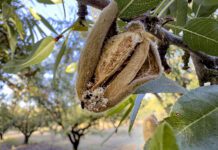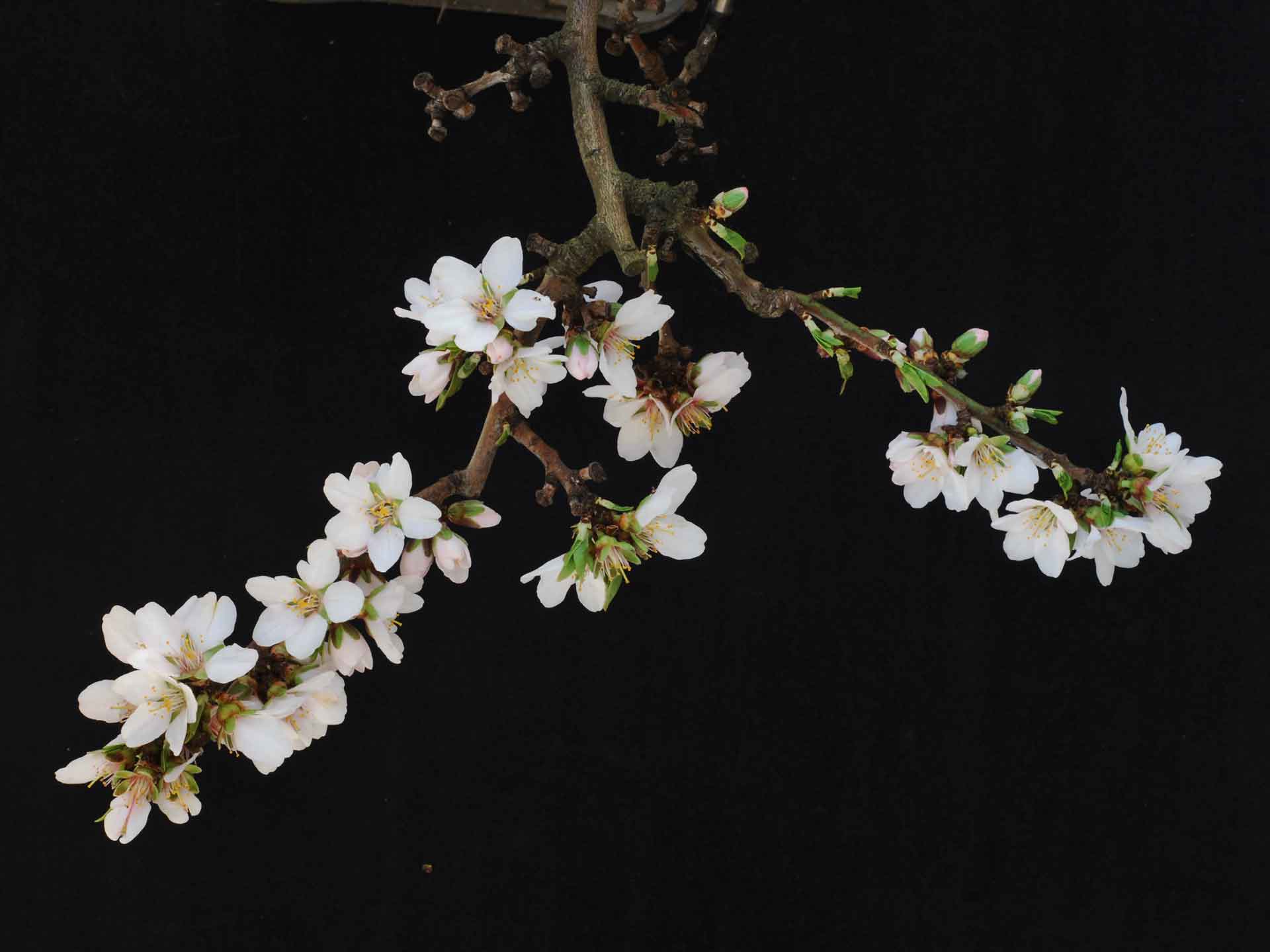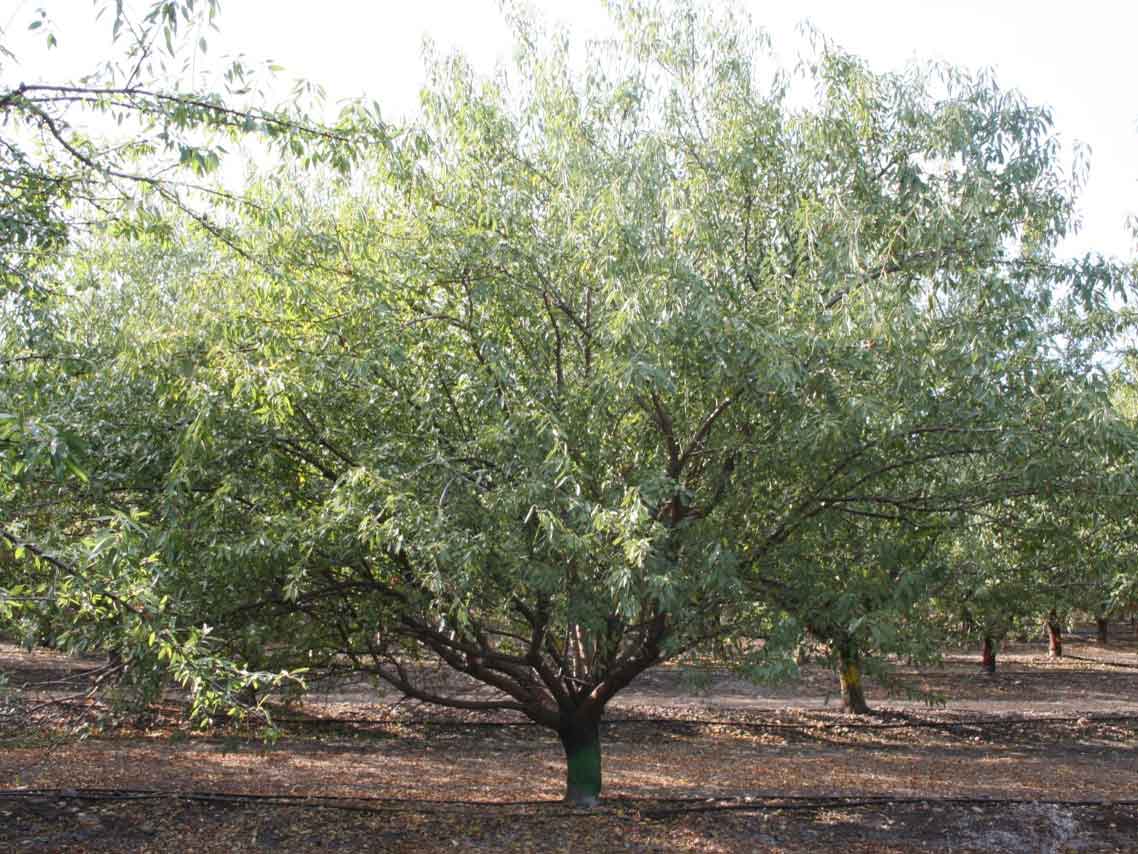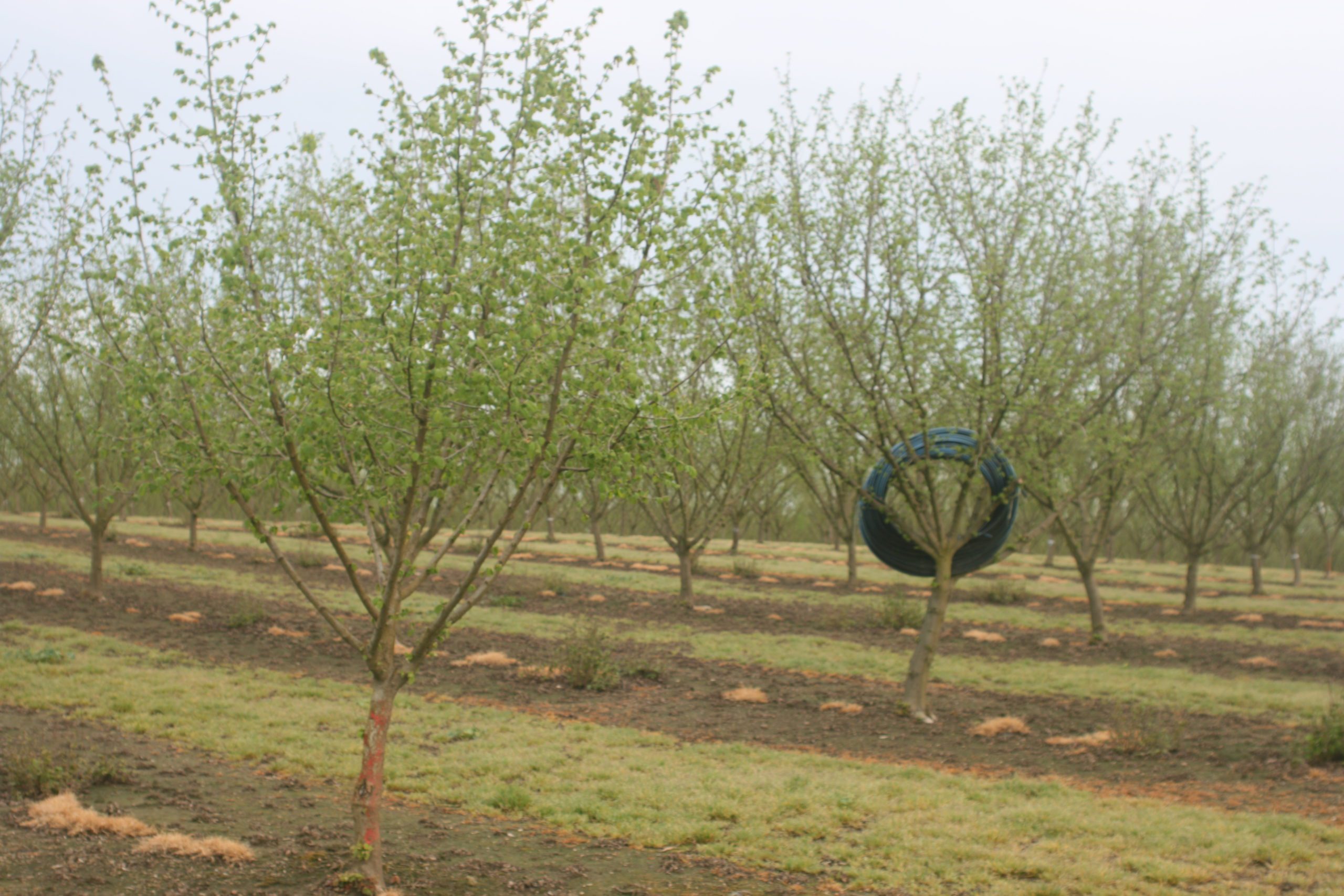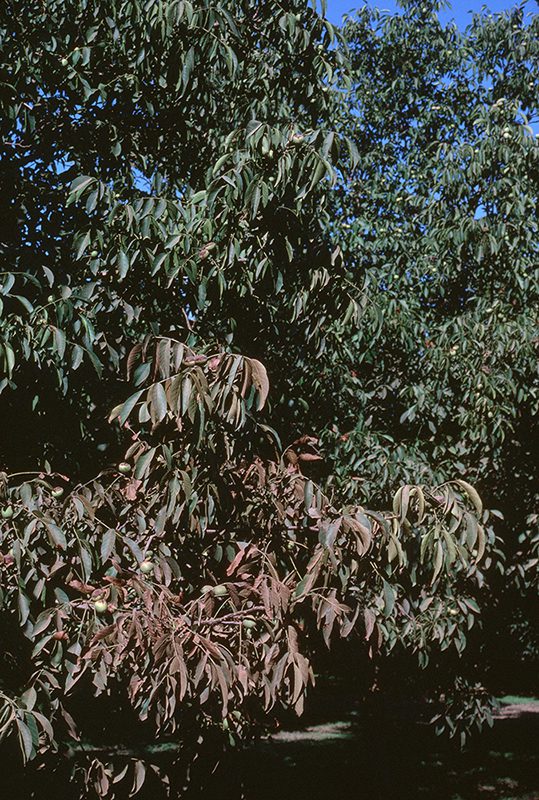
Listen to the audio version of this article. (Generated by A.I.)
Early summer is the time to monitor potential hot spots for spider mites and create a treatment plan where biologicals may have failed to reduce numbers below thresholds.
Spider mites thrive in warm weather and can reproduce in seven days. Mite feeding causes stippling and browning of leaves, resulting in defoliation of the tree. A cluster of brown leaves is often the first sign of increasing mite numbers. Webbing and feeding from mites cause leaf drop. Defoliation early in the season reduces yield and quality. Defoliation late in the season interferes with harvest.
Spider Mites
Pacific and twospotted mites are found in walnuts. They overwinter as reddish orange, mature females in protected areas of the tree, in the soil and in the trash on the ground. In a warm spring, overwintering females start feeding on the walnut leaves and ground cover in the orchard.
When feeding, twospotted mites have a dark spot on each side of the body. Pacific mites have a second pair of dark spots near the back, but often the spots are barely visible or may merge into large dark areas, making it difficult to distinguish the two.
Spider mite colonies develop on the underside of leaves, and when heavy numbers build up, they are also on the upper sides. They produce many generations per year. If the weather is warm and they have a food supply, a generation can be completed in as little as seven days.
Spider mites are problematic in almonds and walnuts, causing similar damage in both crops, according to Sudan Gyawaly, integrated pest management advisor for Butte, Glenn, Yuba/Sutter, Colusa and Tehama counties.
When spider mites feed on the leaves, they remove the cell content, he continued. “Basically, that kills the cell. It causes the stippling seen in almonds and… walnuts. A lot of the dead tissue turns brown.”
The spider mites seen in walnuts cause a large amount of webbing on the leaves. “If there is a lot of feeding, the leaves will desiccate and drop. If that happens early in the season, it can reduce the nut yield and quality,” Gyawaly said. He added that if it happens late in the season, it will interfere with harvest.
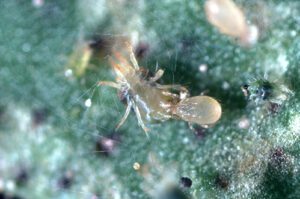
Monitoring and Treatment Decisions
Begin looking for spider mites in late spring and mark areas of concern for summer monitoring.
It is recommended to begin sampling for spider mites once a week in early summer through August:
• Randomly select 10 trees in the orchard. In each tree, pick five leaflets from low branches and five from high branches.
• Look for the presence of webspinning spider mites, predator mites and sixspotted thrips and record observations for low and high branch leaves. If predaceous mites are present on more than half of the leaflets with mites, it is likely that natural enemies will manage the population unless broad-spectrum sprays are applied for codling moth management. Monitor again in one week.
• If predaceous mites are not present on at least half the leaflets that have mites, monitor again in three to four days (three days if weather is hot) to determine if the spider mite population is increasing or decreasing. If mites do not build up by mid-August, then a pesticide application may not be necessary.
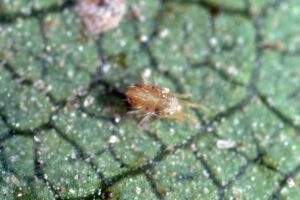
Cultural Control
Well-irrigated, vigorous trees will have fewer problems with mite infestations. Using selective pesticides to treat other pests and avoiding pyrethroids, organophosphates and carbamates until later in the season will also help with spider mite control.
Dust is a factor with spider mites. “Usually, a spider mite infestation begins on the trees that have a lot of dust and trees that are stressed,” Gyawaly said, adding trees on the edges of roadways have a higher incidence of spider mites.
Dust control is an important cultural control method, and growers can either water the orchard roadways, gravel them or oil them. Vegetative cover as much as possible will also help with dust reduction.
Weather impacts spider mite populations, particularly in a drier year. “If there is hot, dry weather, the spider mites will reproduce very quickly, as fast as seven days, and build up really high numbers,” Gyawaly said.
“Hot and dry weather is good for them,” he added, so managing dust is a component to managing spider mites.
Defoliation from spider mites can create problems with sunburn. “Leaves are multifunction,” Gyawaly said. “They photosynthesize as needed for the tree, and then at the same time, they protect the nuts from sunlight. So, if the tree has lost leaves due to spider mite feeding, it can cause more sunburn.”
Biological Control
“We have some biocontrol and beneficials that are available commercially,” Gyawaly said.
Organic walnut farms use biocontrol. Conventional farms can too, but if they use a broad-spectrum miticide or pesticide, it will kill the spider mites and the beneficials.
Natural enemies assist in keeping spider mites below damaging levels unless broad-spectrum pesticides are used. Broad-spectrum pesticides will kill the spider mites and natural enemies. Using selective pesticides when treating other pests will reduce the risk of killing the natural enemies.
The most dependable mite predator of spider mites is the western predatory mite. With optimal conditions, this predatory mite can produce a generation in seven days. Walnut orchards often lack an alternate food source like European red mites early in the season, so the western predatory mites may be late in building numbers that will control webspinning mites.
Sixspotted thrips can be very effective in reducing high numbers of webspinning mites, but sixspotted thrips generally do not move into orchards until mite populations are high. Both the adults and the small, yellowish larvae feed on mites.
The spider mite destroyer is a small lady beetle that also feeds on mites. The larvae are small and dull black. Like the sixspotted thrips, they do not usually become numerous until the spider mite numbers are high, but it can reduce mite numbers quickly when the spider mites are abundant. Minute pirate bugs feed on spider mites too.
There are also oil sprays available that are approved for use in organic walnut orchards, but caution should be taken when applying to avoid injuring the trees.
Resistance
There is always a risk of resistance developing. “In high outbreak populations like we had last year, there was concern. I always have some growers talk about some miticides not being as effective as they used to be in past years,” Gyawaly said. He added it is important to remember the mites were not as problematic in those years.
While there is a concern, Gyawaly is not aware of any resistance in walnuts. “There are some growers or PCAs who have told me they’re not getting good control, but we haven’t proven miticide resistance in walnuts,” he said, adding in other crops there has been resistance.
Walnuts have several different mode-of-action classes or mode-action groups that are available for growers to rotate chemistries, he said.
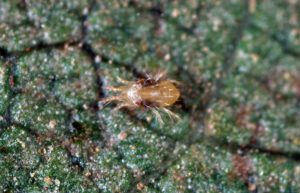
Spider Mite Pressure
Similar to navel orangeworm, spider mite pressure is increasing. “We are seeing more problems with spider mites than in the past; they’re more widely spread,” Gyawaly said, adding 2024 was a bad spider mite year.
With depressed walnut prices, growers are looking to reduce the costs by relying on cheaper pesticides that could harm the beneficials. “Broad-spectrum insecticides will affect the beneficials, and if that’s what is going on in the orchard, and there are increased spider mites, it could be the broad-spectrum treatments,” Gyawaly said.
At this point, it is too early to tell what impact spider mites will have in walnuts for the 2025 season, Gyawaly said.









